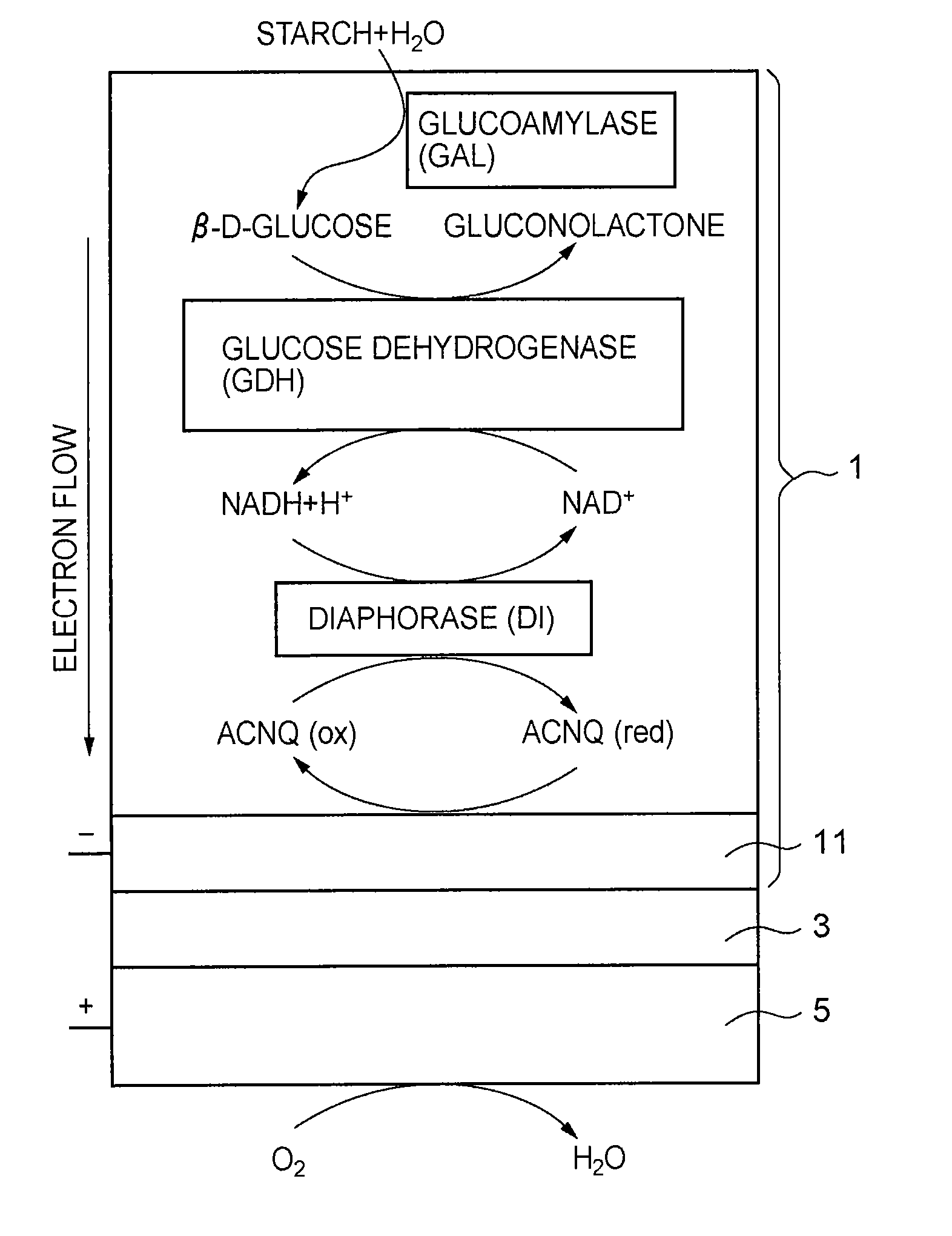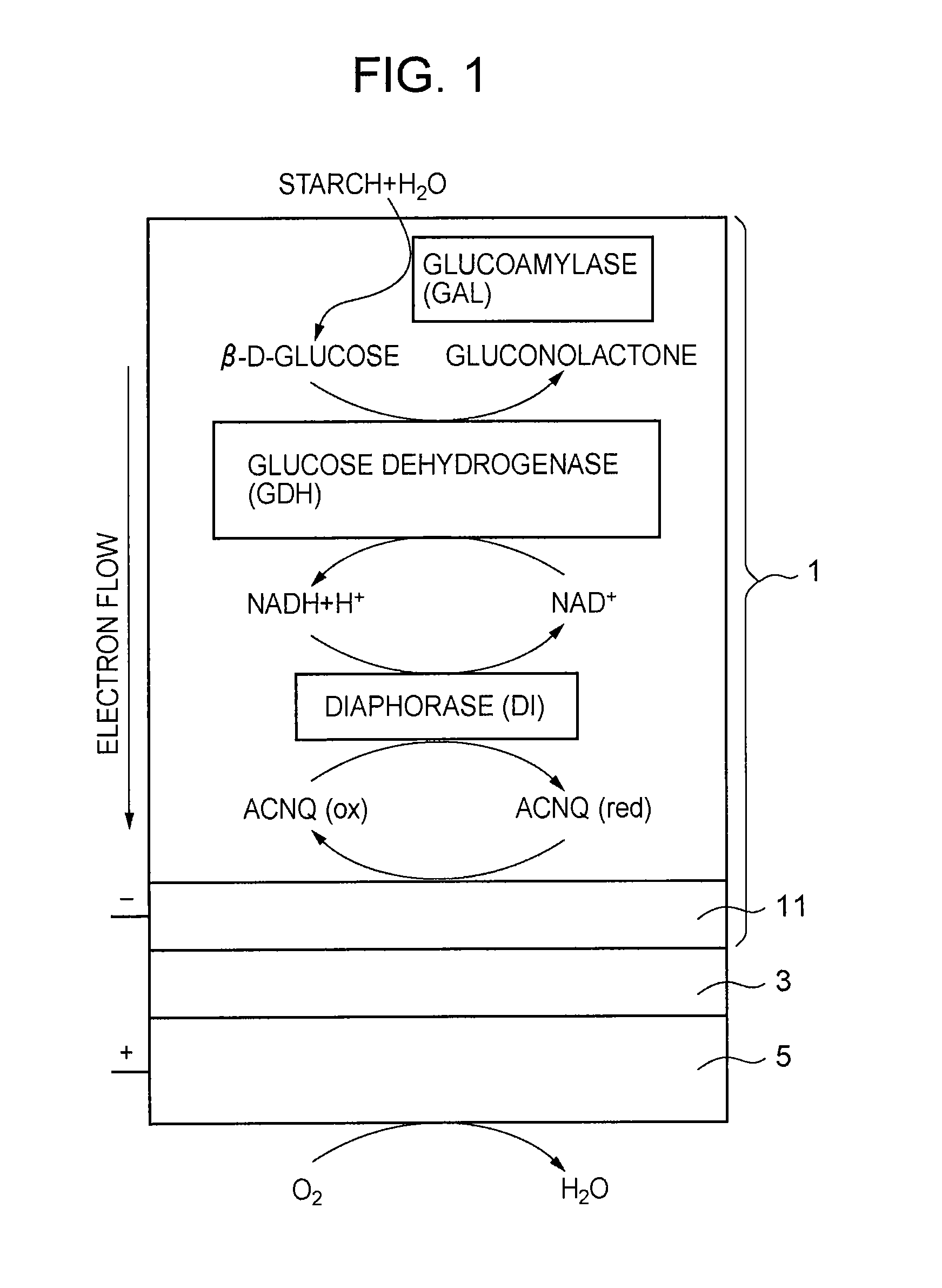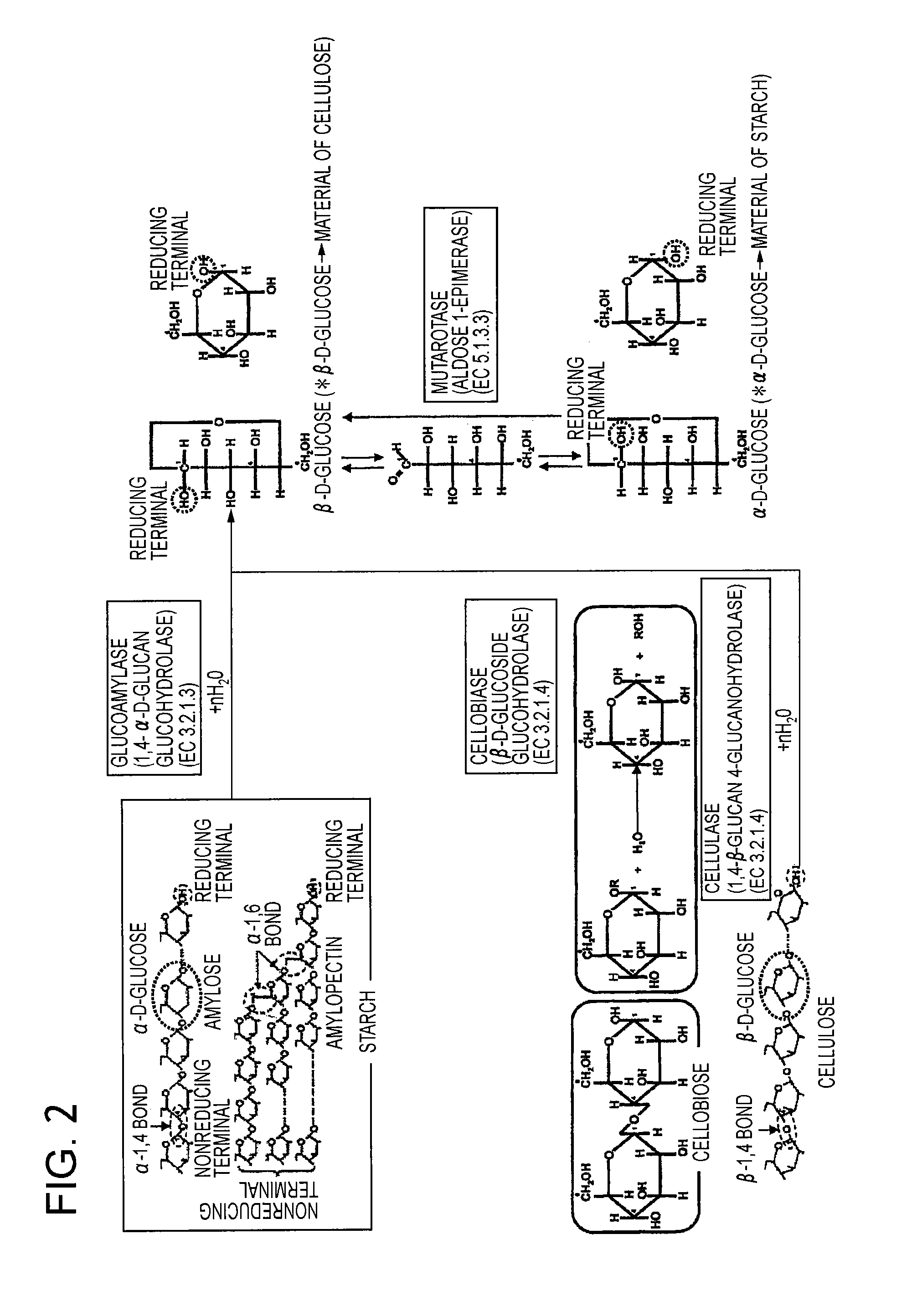Fuel Cell, Electronic Device, Movable Body, Power Generation System, and Congeneration System
a technology of power generation system and fuel cell, which is applied in the direction of cell components, electrochemical generators, active material electrodes, etc., can solve the problems of energy loss and considerable waste of fuel energy, and achieve the effects of efficient extraction of electric energy, effective utilization of garbage, and high efficiency
- Summary
- Abstract
- Description
- Claims
- Application Information
AI Technical Summary
Benefits of technology
Problems solved by technology
Method used
Image
Examples
example 1
[0114] Onto a glassy carbon (GC) electrode (BAS, φ=3.0 mm) were applied dropwise 3 μl of a phosphate buffer solution (83 μM) of diaphorase (DI)(UNITIKA LTD., from Bacillus stearothermophilus), 6 μl of a phosphate buffer solution (60 μM) of glucose dehydrogenase (GDH) (TOYOBO LTD.), 3 μl of a phosphate buffer solution (1.4 mM) of glucoamylase (GAL) (Oriental Yeast Co., Ltd.),3 μl of an aqueous solution (1%) of poly-L-lysine (PLL), 2 l of a phosphate buffer solution (0.4 M) of NADH, 2 μl of an ethanol solution (28 mM) of ACNQ, and 3 μl of an aqueous solution (0.125%) of glutaraldehyde (GA), and they were mixed with each other and air-dried at room temperature, followed by washing with distilled water, preparing a GAL / GDH / NADH / DI / ACNQ-immobilized electrode (see FIG. 1).
[0115] The thus prepared immobilized electrode was used as a working electrode, an Ag / AgCl electrode was used as a reference electrode, a Pt electrode was used as a counter electrode, an electrolytic cell made of polyte...
example 2
[0116] An electrochemical measurement was conducted in substantially the same manner as in Example 1 except that 5 mg of a material obtained by gelatinizing a 50% phosphate buffer solution of starch at 70° C. was applied to the GAL / GDH / NADH / DI / ACNQ-immobilized electrode prepared in Example 1, and that the reaction solution was changed to 1 ml of a 0.1 M phosphate buffer solution (pH 7; I.S.=0.3)
example 3
[0123] With respect to the fuel electrode 1 having immobilized thereon starch glue 6 as a fuel and glucoamylase (GAL) as an enzyme decomposing starch into glucose, a CV measurement was conducted under the same conditions as those used in Example 1. The results are shown in FIG. 12 (curved line a). In FIG. 12, for reference, the result of the CV measurement in the case where a glucose solution was used as a fuel is also shown (curved line b). As can be seen from FIG. 12, when the starch glue 6 is used as a fuel, a considerably large current can be obtained, as compared to the maximum current obtained when the glucose solution (glucose concentration: 200 mM) is used as a fuel. This result reflects the extremely high glucose concentration on the surface of the fuel electrode 1 as mentioned above. Further, the reason why the current increases with the passage of time resides in that the starch is gradually hydrolyzed by glucoamylase (GAL) and, consequently, the glucose concentration on ...
PUM
| Property | Measurement | Unit |
|---|---|---|
| temperature | aaaaa | aaaaa |
| temperature | aaaaa | aaaaa |
| open circuit voltage | aaaaa | aaaaa |
Abstract
Description
Claims
Application Information
 Login to View More
Login to View More - R&D
- Intellectual Property
- Life Sciences
- Materials
- Tech Scout
- Unparalleled Data Quality
- Higher Quality Content
- 60% Fewer Hallucinations
Browse by: Latest US Patents, China's latest patents, Technical Efficacy Thesaurus, Application Domain, Technology Topic, Popular Technical Reports.
© 2025 PatSnap. All rights reserved.Legal|Privacy policy|Modern Slavery Act Transparency Statement|Sitemap|About US| Contact US: help@patsnap.com



